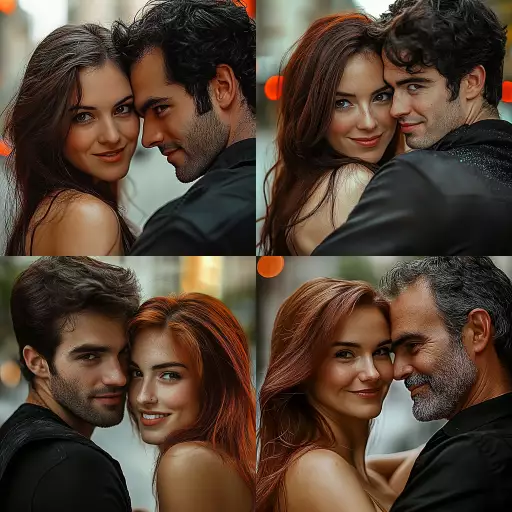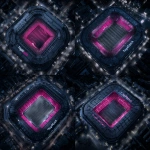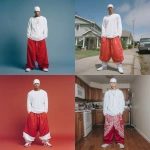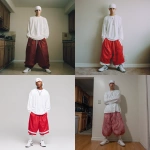Explore the Best AI Image Gallery

Blockchain Beyond Finance: Reshaping the Creative Landscape
Blockchain technology, once synonymous with finance and cryptocurrency, is steadily expanding its reach into diverse sectors. Among these is the creative industry, where blockchains unique characteristics are poised to revolutionize how artists create, share, and monetize their work. This blog post delves into this burgeoning landscape, exploring the transformative potential of blockchain in the creative realm.
Unlocking New Opportunities for Artists
Blockchain empowers artists with unprecedented control over their creations. By registering their works on an immutable ledger, artists establish verifiable ownership and provenance, combating copyright infringement and ensuring fair attribution. Smart contracts, self-executing agreements embedded within the blockchain, can automate royalty payments to creators whenever their work is sold or used, fostering a more equitable and transparent ecosystem.
NFTs: A Paradigm Shift in Art Ownership
Non-fungible tokens (NFTs) have emerged as a groundbreaking application of blockchain in the art world. These unique digital assets represent ownership of specific pieces of artwork, be it paintings, music compositions, or even virtual collectibles. NFTs enable fractional ownership, allowing multiple individuals to share in the value of a single artwork, making high-value art more accessible. Furthermore, they empower artists to connect directly with their audiences, bypassing traditional intermediaries and retaining a greater share of the profits.
Decentralized Platforms for Creative Collaboration
Blockchain fosters decentralized platforms that facilitate collaboration among artists, musicians, writers, and other creative professionals. These platforms allow creators to share ideas, co-author works, and collectively build projects without relying on centralized intermediaries. The transparent nature of blockchain ensures fair compensation and attribution for all contributors, fostering a more inclusive and collaborative creative environment.
Ethical Considerations in the Blockchain Creative Space
While the potential of blockchain in the creative industry is vast, its crucial to address ethical considerations that accompany this technological advancement.
- Data Privacy and Security: Blockchains immutability can raise concerns regarding data privacy, as information once recorded on the ledger becomes permanently accessible. It is essential to implement robust security measures and ensure user consent for data sharing.
- Accessibility and Inclusivity: The technical complexities of blockchain can create barriers for entry for artists lacking technical expertise. Efforts should be made to develop user-friendly tools and platforms that empower all creators to participate in the blockchain ecosystem.
- Copyright and Intellectual Property: While blockchain can help protect intellectual property rights, its essential to establish clear guidelines and legal frameworks that address potential complexities surrounding copyright ownership and infringement in the digital realm.
Future Trends Shaping the Blockchain Creative Landscape
The intersection of blockchain and creativity is constantly evolving. Emerging trends are poised to further reshape the creative landscape:
- Integration with Augmented Reality (AR) and Virtual Reality (VR): Blockchain can enable immersive AR/VR experiences that seamlessly blend the physical and digital worlds, creating new possibilities for artistic expression and audience engagement.
- Metaverse Art and Commerce: The metaverse, a virtual world where users can interact and create, presents a fertile ground for blockchain-based art and commerce. Artists can showcase their work in virtual galleries, sell NFTs, and participate in immersive creative experiences.
- Decentralized Autonomous Organizations (DAOs): DAOs are community-owned and governed entities that can empower artists to collaborate, raise funds, and make collective decisions about the direction of creative projects.
As blockchain technology continues to mature, its impact on the creative industry will only grow. By embracing these innovations, artists can unlock new opportunities, forge deeper connections with audiences, and shape the future of creativity in a decentralized and equitable world.



](https://images.ai-img.art/thumbnails/150/908bcb9950a44fd4b37d1a84cf00178988cea9507738d7ad4f92707c692461ef.webp)



](https://images.ai-img.art/thumbnails/150/57afc09cc38edf73880f760b7ebe1852c5522c6b4051836717b2e56b6f7f913c.webp)







](https://images.ai-img.art/thumbnails/150/738b292720ee21b57673dfb75ad851f4c34d16f5006ae3027ba685feaddb6b04.webp)







](https://images.ai-img.art/thumbnails/150/3ccc82ef0ad0cc1ab1dfb5b8e6bc37924fcad45dadf41cbd1cb21d19fc7f640a.webp)













](https://images.ai-img.art/thumbnails/150/05b3252b3f681226a3df9027b069db31c005f91b72257a74367c4102f03a2ba0.webp)
](https://images.ai-img.art/thumbnails/150/807ac97f95d56e8cc7cf714e13299d80bf6bcb5b4d80b77a7f06f30246184943.webp)

](https://images.ai-img.art/thumbnails/150/fc468fe14407b96489933a55227127071fd5f6c0505be74ca4dcb2f1e2fa3771.webp)



](https://images.ai-img.art/thumbnails/150/69d81ae5ecde297f3c11da78435c5fc00fbac7b00e2c7ccd89d7bbeb014e0541.webp)

](https://images.ai-img.art/thumbnails/150/83ec831b9fb19e0db5a520b051b9556f3f594b87acc957ffee094a06a565e6f0.webp)